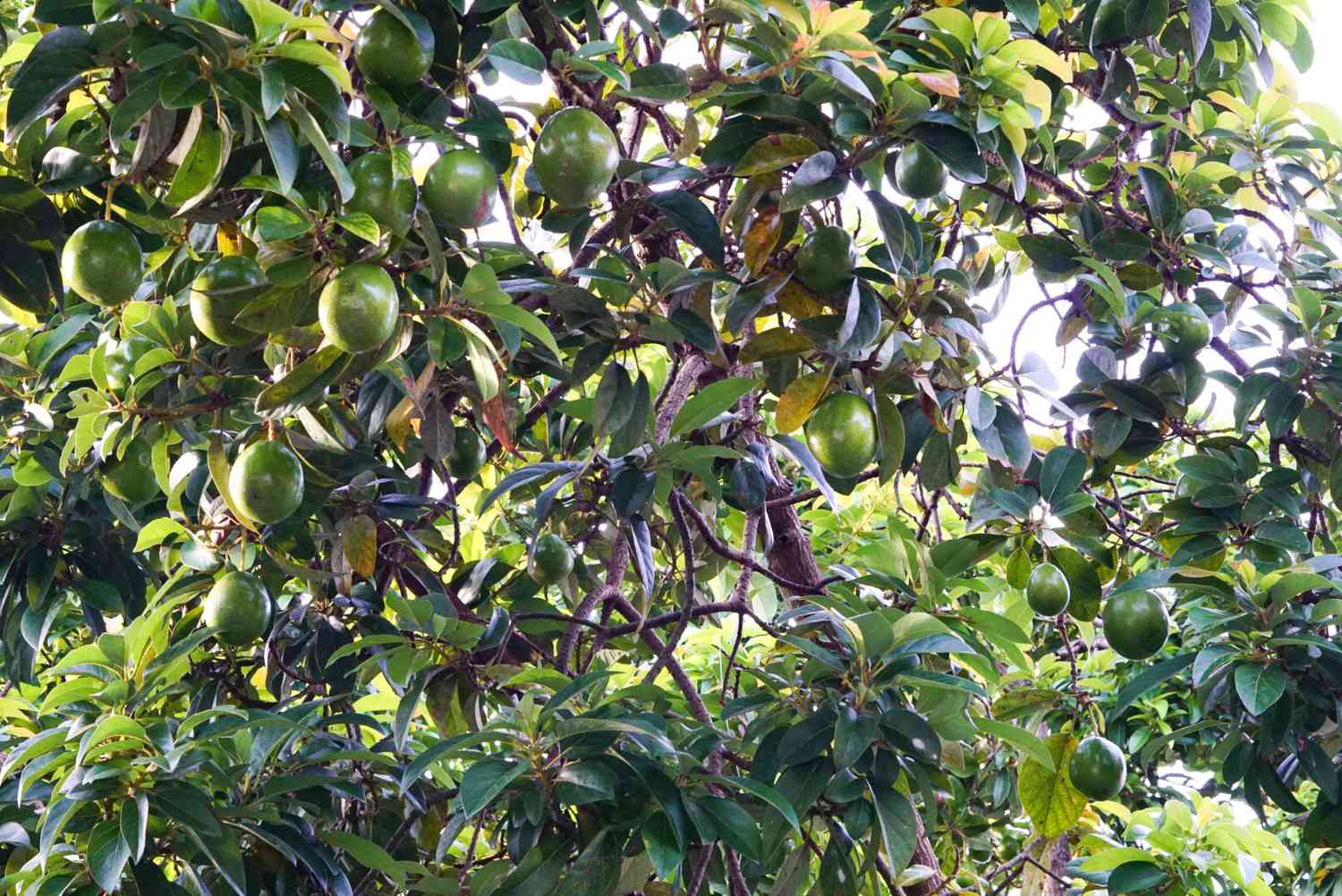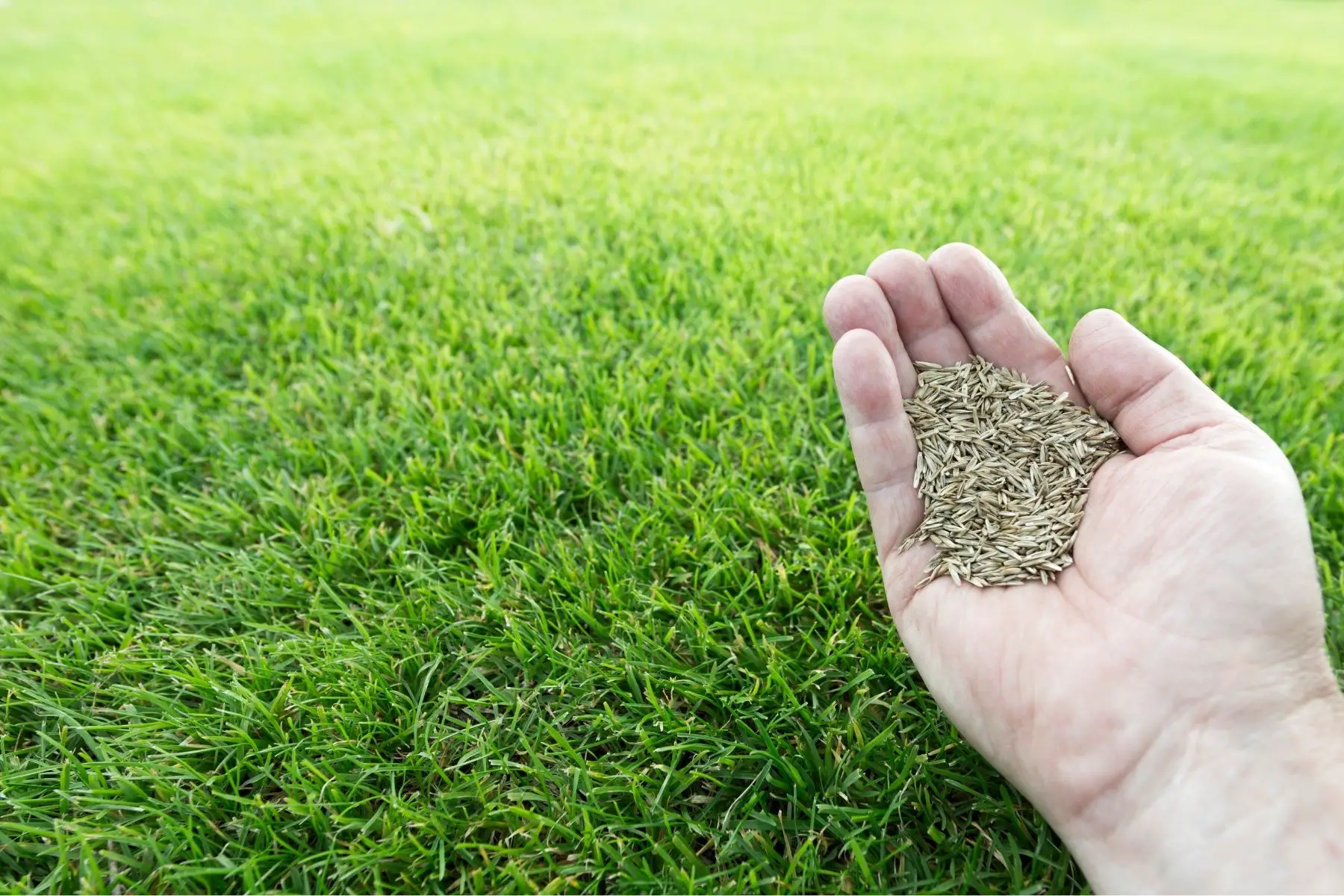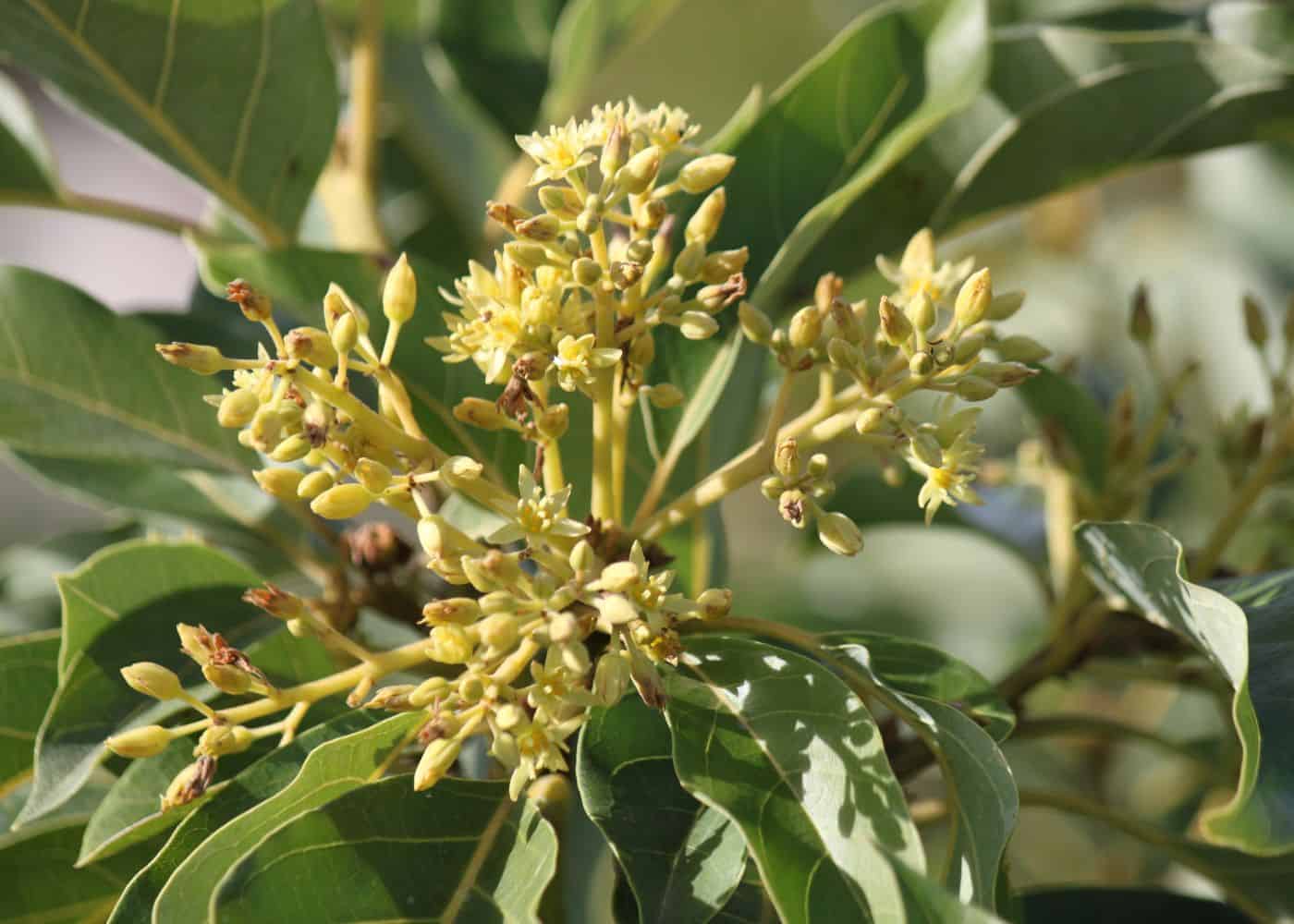Home>Garden Design>Planning Your Garden>How Long Do Avocado Trees Take To Grow


Planning Your Garden
How Long Do Avocado Trees Take To Grow
Modified: February 10, 2024
Plan your garden and learn how long it takes for avocado trees to grow. Discover the essential timeline for cultivating your own homegrown avocados.
(Many of the links in this article redirect to a specific reviewed product. Your purchase of these products through affiliate links helps to generate commission for Chicagolandgardening.com, at no extra cost. Learn more)
Table of Contents
- Introduction
- Factors Affecting Avocado Tree Growth
- Climate Requirements for Avocado Trees
- Soil Conditions for Avocado Tree Growth
- Choosing the Right Avocado Variety
- Germination and Seedling Stage
- Tree Establishment and Early Growth
- Pruning and Maintenance of Avocado Trees
- Flowering and Fruit Production
- Timeframe for Avocado Tree Maturity
- Conclusion
Introduction
Welcome to the wonderful world of gardening! Planning your garden is an exciting and fulfilling endeavor. Whether you’re a seasoned green thumb or a beginner, creating a beautiful and thriving garden starts with careful planning. One important aspect of garden planning is deciding which plants to include. Among the many options available, avocado trees stand out as a popular choice.
Avocado trees (Persea americana) not only provide shade and beauty to your garden, but they also yield delicious and nutritious fruits. However, before diving into the process of planting and growing an avocado tree, it’s crucial to understand the factors that affect its growth and the specific requirements this tree has.
In this article, we will explore the various elements that contribute to the growth of avocado trees, from climate conditions to soil requirements. We’ll also discuss the importance of choosing the right avocado variety and the stages an avocado tree goes through, from germination to maturity.
By the end of this article, you’ll have a comprehensive understanding of the timeline and necessary steps to successfully grow an avocado tree in your garden. So, let’s dig in and discover the secrets to planning your avocado tree garden!
Factors Affecting Avocado Tree Growth
Growing healthy and productive avocado trees requires a thorough understanding of the factors that influence their growth. By taking these factors into account, you can provide the optimal conditions needed for your tree to thrive. Let’s explore some of the key factors that affect avocado tree growth:
- Climate: Avocado trees are native to subtropical and tropical regions, making them sensitive to extreme temperatures. They thrive in mild climates with temperatures between 60°F and 85°F (15°C-29°C). Frost can be detrimental, especially to young trees, so it’s essential to choose a location with a low risk of frost.
- Light: Avocado trees require plenty of sunlight to grow and produce fruits. A minimum of six hours of direct sunlight per day is ideal. Insufficient light can lead to weak growth and reduced fruit production.
- Water: Adequate and consistent watering is crucial for avocado tree growth. Avocado trees have shallow roots, so they require frequent irrigation, especially during dry periods. However, overwatering can lead to root rot, so it’s important to maintain proper drainage.
- Soil: Avocado trees prefer well-draining soil that is rich in organic matter. A pH level between 6 and 7 is optimal. Clay soils should be amended with compost or sand to improve drainage. Avoid heavy clay and sandy soils, as they can hinder root establishment and growth.
- Fertilization: Avocado trees have specific nutrient requirements, with a focus on potassium, nitrogen, and phosphorus. Regular applications of a balanced fertilizer formulated for fruit trees will help promote healthy growth and fruit production.
- Pollination: Most avocado varieties are not self-pollinating, so they require cross-pollination with another variety for optimal fruit production. It’s important to select compatible avocado varieties and provide pollinators, such as bees, to ensure successful pollination.
- Pests and diseases: Avocado trees are susceptible to various pests and diseases, including root rot, fungal diseases, and pests like avocado lace bugs and thrips. Regular monitoring and suitable pest control measures are necessary to keep your trees healthy.
By considering these factors and making the necessary adjustments, you can create the ideal growing conditions for your avocado trees. Understanding and addressing these factors will greatly enhance the chances of success in growing healthy and fruitful avocado trees in your garden.
Climate Requirements for Avocado Trees
Avocado trees are native to subtropical and tropical climates, and their growth is heavily influenced by temperature and humidity. Understanding the specific climate requirements for avocado trees is crucial for their successful cultivation. Let’s take a closer look at the key climate factors that avocado trees need:
Temperature: Avocado trees thrive in mild temperatures, typically between 60°F and 85°F (15°C-29°C). They are sensitive to frost, especially during the early stages of growth. Exposure to temperatures below 30°F (-1°C) can lead to severe damage and even death of the tree. Therefore, it is essential to select a planting location that is protected from cold drafts and frost-prone areas.
Humidity: Avocado trees prefer areas with moderate humidity levels. While they can tolerate some degree of dryness, excessively arid conditions can lead to stress and affect tree health. In regions with low humidity, regular irrigation and mulching can help create a more favorable microclimate for the tree.
Wind: Strong winds can damage avocado trees, especially when combined with low humidity or cold temperatures. Planting the trees in a location shielded from strong winds, such as near buildings or on the leeward side of a hill or wall, can help protect them from wind damage.
Elevation: Avocado trees are adaptable to a range of elevations, but there are optimal elevations for different varieties. In general, lower elevations are suitable for tropical varieties, while subtropical varieties can thrive at higher elevations. It’s important to choose an avocado variety that is well-suited to your specific elevation and climate conditions.
Microclimates: Avocado trees are known for their ability to adapt to various microclimates, which are small-scale variations in climate within a larger region. Factors such as nearby bodies of water, slopes, and vegetation can create microclimates that differ from the surrounding area. These microclimates can influence temperature, humidity, and wind conditions, providing opportunities to successfully grow avocado trees in areas that may otherwise be unsuitable.
By understanding the specific climate requirements of avocado trees, you can assess whether your location is suitable for their cultivation. If you live in an area with extreme temperatures, frost, or high winds, you might need to provide additional protection or consider growing avocado trees in containers that can be moved indoors during adverse weather conditions. Remember, creating a favorable microclimate and providing proper care and maintenance will greatly enhance the chances of success in growing avocado trees.
Soil Conditions for Avocado Tree Growth
The right soil conditions are crucial for the healthy growth and development of avocado trees. Avocado trees require well-draining soil that provides adequate nutrition and supports optimal root development. Let’s explore the key soil considerations for successful avocado tree growth:
Drainage: Avocado trees are highly sensitive to waterlogged or poorly drained soils. Standing water around the roots can lead to root rot and other diseases. Ideally, the soil should have good internal drainage to allow excess water to percolate through. If the soil holds too much water, it may be necessary to improve drainage by adding organic matter or installing raised beds.
Organic matter: Avocado trees benefit from soils rich in organic matter. Organic matter improves soil structure, moisture retention, and nutrient availability. Compost, well-rotted manure, or other organic amendments can be added to the soil during planting or incorporated as a top dressing to provide a continuous supply of nutrients to the tree.
Texture: Avocado trees prefer loamy or sandy loam soils that are well-draining. These soil types provide a balance of water retention and drainage, allowing the roots to access both water and oxygen. Heavy clay soils can impede root growth and lead to poor drainage, while sandy soils may not retain enough moisture or nutrients. Adding organic matter or sand can help improve soil texture if necessary.
Nutrient content: Avocado trees have specific nutrient requirements for healthy growth. They require a balanced supply of macronutrients such as nitrogen, phosphorus, and potassium, as well as micronutrients like iron, manganese, and copper. Conducting a soil test can provide insight into nutrient deficiencies or excesses, allowing you to adjust fertilization accordingly.
Mulching: Applying a layer of organic mulch around the base of the avocado tree can help conserve moisture, suppress weed growth, and improve soil structure over time. Mulch also provides a slow release of nutrients as it decomposes, benefiting the tree’s overall health.
Creating the right soil conditions is essential to ensure the long-term success of your avocado tree. By providing well-draining soil with optimal pH, organic matter, and nutrient content, you will promote healthy root development and vigorous growth. Regular soil testing and maintenance will ensure that the soil remains in optimal condition to support the needs of your avocado trees.
Choosing the Right Avocado Variety
When it comes to growing avocado trees, selecting the right variety is vital for a successful harvest. Avocado varieties can differ in terms of taste, size, tree size, and cold hardiness. Factors to consider when choosing an avocado variety include:
Climatic Suitability: Different avocado varieties have specific climate preferences. Some are better suited to tropical regions, while others can tolerate cooler temperatures. Research the average temperatures and frost risk in your area to choose a variety that can thrive in your climate.
Taste and Texture: Avocado fruits can vary in taste and texture. Some varieties have a rich, buttery flavor, while others have a more mild and nutty taste. Consider your personal preference and the flavor profile you desire in your avocado fruits.
Fruit Size: Avocado fruits can range in size from small to large. The size of the fruit can impact yield and usage. Smaller varieties may be ideal for single servings or smaller gardens, while larger varieties are great for those who consume avocados frequently or wish to share their harvests with others.
Tree Size: Avocado trees can vary in size as well. Some varieties are more compact and suitable for smaller gardens or container planting, while others can reach heights of up to 30 feet. Consider the available space in your garden and the ultimate size you desire for your avocado tree.
Harvest Season: The harvest season of avocado varieties can vary. Some varieties produce fruits earlier in the season, while others ripen later. By selecting different varieties that mature at different times, you can extend your avocado harvest throughout the year.
Cold Hardiness: For those living in regions with colder climates, selecting a cold-hardy avocado variety is crucial. Certain varieties can withstand lower temperatures and frost, allowing for successful cultivation in areas that experience colder winters.
It’s important to thoroughly research the different avocado varieties available in your region and consult with local horticulturists or garden centers to find the best options for your specific conditions. Consider your personal preferences, climate, available space, and the desired size and taste of the fruit. By choosing the right avocado variety, you’ll increase the likelihood of a bountiful harvest and a thriving avocado tree in your garden.
Germination and Seedling Stage
The germination and seedling stage is an important phase in the growth of avocado trees. It sets the foundation for the tree’s development and establishes strong roots. Here are key factors to consider during this stage:
Seed Selection: Start by choosing healthy avocado seeds. Select seeds from ripe fruits, free of blemishes or damages. Rinse the seeds to remove any remnants of fruit pulp, and allow them to dry for a few days.
Germination: There are several methods to germinate avocado seeds, but a common approach is the toothpick method. Insert three to four toothpicks into the seed, around its midpoint, and suspend it with the wider end down over a glass of water. Place the glass in a warm and well-lit area, and maintain the water level. Within two to six weeks, a root and shoot will emerge from the seed.
Transplanting Seedlings: Once the roots are about two to three inches long, it’s time to transplant the seedling into a suitable container or nursery bed. Use a well-draining potting mix or soil that provides good aeration. Gently plant the seedling, ensuring that the top of the seed remains slightly above the soil surface.
Light and Water: Keep the seedling in a warm and well-lit area, receiving about six hours of direct sunlight per day. Water the seedling regularly, keeping the soil consistently moist. Avoid overwatering, as it can lead to root rot. As the seedling grows, adjust watering to allow the soil to dry slightly between waterings.
Temperature and Humidity: Maintain a temperature between 70°F and 85°F (21°C-29°C) during the germination and seedling stage. Avocado trees prefer a moderate level of humidity. If the environment is dry, consider using a misting spray or placing a tray of water nearby to increase humidity.
Protection from Frost and Pests: Avocado seedlings are vulnerable to frost and pests. If you live in a cold climate, it’s essential to protect the seedling from frost by bringing it indoors or providing a frost cover during winter. Regularly inspect the seedling for pests, such as aphids or spider mites, and take appropriate measures to control them.
Monitoring and Care: Regularly monitor the seedling’s growth and overall health. Look for signs of nutrient deficiencies or diseases, such as yellowing leaves or wilting. Fertilize the seedling with a balanced fertilizer formulated for young trees, following the instructions on the package.
Remember, the germination and seedling stage is just the beginning of the avocado tree’s journey. With proper care, attention, and patience, your seedling will grow into a healthy and robust avocado tree ready to flourish and produce delicious fruits.
Tree Establishment and Early Growth
Once your avocado seedling has successfully passed the germination and seedling stage, it’s time to focus on tree establishment and early growth. This crucial period sets the foundation for the tree’s long-term health and productivity. Here are key considerations during this stage:
Transplanting in the Ground: If you’re transplanting your avocado tree into the ground, choose a planting site that provides adequate sunlight, good drainage, and ample space for the tree to grow. Dig a wide planting hole and loosen the soil to ensure proper root development. Gently remove the seedling from its container and place it in the hole, backfilling with soil. Build a small berm around the base of the tree to retain water during irrigation.
Watering: During the establishment phase, it’s important to provide adequate water to promote root growth and hydration. Keep the soil consistently moist but not waterlogged. Water deeply and infrequently to encourage deep root penetration. Gradually reduce the frequency of watering as the tree establishes, allowing the soil to dry slightly between waterings.
Mulching: Apply a layer of organic mulch around the base of the tree, leaving space around the trunk to prevent moisture retention. Mulch helps conserve soil moisture, regulate soil temperature, suppress weed growth, and improve soil structure. Monitor the mulch layer and replenish as needed.
Pruning: Pruning during the early growth stage helps shape the tree, promote a strong structure, and encourage proper branching. Remove any damaged or crossing branches, as well as any suckers or water sprouts that emerge from the trunk or main branches. Prune with clean and sharp tools, making clean cuts just outside the branch collar.
Fertilization: Young avocado trees benefit from regular fertilization to support their early growth. Apply a balanced fertilizer formulated for fruit trees according to the manufacturer’s instructions. Avoid excessive fertilization, as it may cause nutrient imbalances or burn the tree’s roots. Regularly monitor leaf color and growth, adjusting fertilization as needed.
Weed Control: Keep the area around the tree clear of weeds to minimize competition for nutrients and water. Regularly remove weeds by hand or use a shallow cultivation tool. Applying mulch can help suppress weed growth and reduce the need for frequent weeding.
Protection from Extreme Weather: Provide protection against extreme weather conditions that can pose a risk to young avocado trees. Shield the tree from strong winds using windbreaks or strategically planting it near structures. In colder regions, cover the tree with frost blankets or construct temporary shelters during freezing temperatures.
Regular Monitoring: Monitor your avocado tree regularly for signs of pests, diseases, or nutrient deficiencies. Check for insect activity, leaf discoloration, or stunted growth. Promptly address any issues by applying appropriate pest control measures or adjusting fertilization and watering practices.
By focusing on these key aspects of tree establishment and early growth, you provide the optimal conditions for your avocado tree to thrive. With proper care and attention, you’ll be rewarded with a healthy and vigorous tree that will eventually yield a bountiful harvest of delicious avocados.
Pruning and Maintenance of Avocado Trees
Pruning and maintenance play a crucial role in the health, productivity, and overall appearance of avocado trees. Regular pruning helps shape the tree, encourage proper airflow, promote fruit production, and remove diseased or damaged branches. Here are key considerations for pruning and maintaining your avocado trees:
Timing: Prune avocado trees during their dormant season, typically in late winter or early spring before new growth emerges. Pruning during this period minimizes stress on the tree and allows for optimal wound healing.
Tools and Techniques: Use clean, sharp pruning tools, such as hand pruners or loppers, to make clean cuts. Avoid tearing or ripping branches, as this can lead to open wounds and increase the risk of infection. Make cuts just outside the branch collar, the slightly swollen area where the branch connects to the trunk or larger branch.
Structural Pruning: Focus on developing a strong and well-balanced tree structure during the early years. Remove any crossing or downward-growing branches, as well as suckers that emerge from the trunk or main branches. Maintain a central leader (main trunk) and encourage a scaffold of well-spaced lateral branches.
Thinning: As the tree matures, thinning cuts can help improve airflow and reduce overcrowding. Remove any branches that are excessively crowded or growing inwards towards the center of the tree. Thinning allows for better light penetration, reduces disease susceptibility, and promotes uniform fruit development.
Height Control: Avocado trees can grow quite tall, making it challenging to manage harvest and maintenance. To control height, consider applying corrective pruning techniques, such as hedging or topping, in combination with regular pruning. However, avoid excessive or aggressive pruning, as it can result in reduced fruit production and stress the tree.
Maintenance Pruning: Regularly inspect the tree for damaged, diseased, or dead branches and promptly remove them to prevent the spread of diseases or pests. Cut back any water sprouts or suckers that emerge from the trunk or main branches. Maintain a balanced and open canopy to enhance light penetration and airflow.
Protection from Pests and Diseases: Monitor your avocado trees for signs of pests like aphids, thrips, or mites, as well as diseases such as root rot or fungal infections. Apply appropriate pest control measures, such as biological controls or organic sprays, to manage pest infestations. Follow recommended cultural practices, such as proper irrigation and drainage, to prevent common diseases.
Mulching and Fertilizing: Apply a layer of organic mulch around the base of the tree to conserve soil moisture, regulate soil temperature, and suppress weeds. Replenish the mulch layer regularly. Fertilize the tree with a balanced fertilizer formulated for fruit trees, following the recommended application rates and timing as directed by the manufacturer.
Regular Monitoring: Schedule regular inspections to monitor the overall health and vigor of your avocado trees. Look for any signs of stress, nutrient deficiencies, or pest and disease activity. Adjust your maintenance practices as needed based on observation and consultation with local horticulturists or garden experts.
Through proper pruning and maintenance, you can optimize the health, yield, and longevity of your avocado trees. Remember, pruning should be done in moderation, always keeping in mind the natural shape and growth habit of the tree. With regular care and attention, your avocado trees will thrive, providing you with an abundant supply of delicious fruits season after season.
Flowering and Fruit Production
One of the most rewarding stages of growing avocado trees is witnessing their beautiful flowers blooming and the subsequent production of delicious fruits. Understanding the flowering and fruiting process is essential for maximizing fruit production and ensuring a successful harvest. Here are key factors to consider:
Flower Development: Avocado trees are categorized as Type A or Type B based on their flower behavior. Type A trees open their female flowers in the morning and close in the afternoon, while Type B trees open their female flowers in the afternoon and close the next morning. Understanding the flowering pattern of your avocado variety is crucial for successful pollination.
Pollination: Most avocado trees are not self-pollinating and require cross-pollination with another compatible variety. To enhance pollination, it’s recommended to plant at least one Type A and one Type B avocado tree in close proximity. Alternatively, you can introduce pollinators like bees to your garden to facilitate the transfer of pollen between the flowers.
Fruit Set: After successful pollination, the flowers develop into small fruit. However, not all flowers will set fruit due to factors such as inadequate pollination or unfavorable environmental conditions. It’s normal for some flowers to drop naturally during the fruit set process.
Thinning: Avocado trees often produce an abundance of fruit, which can lead to small fruit size and potential stress on the tree. Thinning the fruit when they are about the size of a walnut can help improve fruit quality and prevent limb breakage. Remove excess fruit, leaving an appropriate spacing between them to allow for proper development.
Irrigation: Adequate water is essential for fruit development. Ensure that your avocado trees receive sufficient irrigation to keep the soil consistently moist, especially during dry periods. Avoid overwatering, as it can lead to root rot. The irrigation frequency may vary depending on factors such as climate and soil type.
Fertilization: Avocado trees have specific nutrient requirements for optimal fruit production. Applying a balanced fertilizer formulated for fruit trees, or one specifically designed for avocados, can help provide the necessary nutrients. Follow the recommended application rates and timing to ensure proper fertilization without overloading the tree with nutrients.
Harvesting: Avocado fruits are typically harvested when they reach maturity and have achieved the desired size and taste. Harvesting times vary depending on the avocado variety and local climate. Generally, avocados are harvested when they have a slight softness when gently pressed and easily detach from the tree when twisted gently. It’s best to harvest avocados when they are fully mature but not overripe.
Pruning and Maintenance: Regular pruning and maintenance practices contribute to healthy fruit production. Prune to maintain a well-balanced tree structure and enhance light penetration and airflow within the canopy. Address any signs of pests, diseases, or nutrient deficiencies promptly, as these can impact fruit production and quality.
Through proper care and attention to the flowering and fruiting process, you can maximize the productivity and quality of your avocado tree’s fruits. Stay attuned to the unique pollination requirements of your avocado variety, provide adequate irrigation and fertilization, and address any issues that may arise promptly. With patience and proper management, you will enjoy a bountiful harvest of delicious avocados from your tree.
Timeframe for Avocado Tree Maturity
Avocado trees are known for their slow growth rate, requiring patience and long-term commitment from gardeners. The timeframe for an avocado tree to reach maturity and produce a significant harvest can vary depending on several factors. Here are key considerations regarding the timeframe for avocado tree maturity:
Root Development: Avocado trees establish a strong root system during their early years, which is essential for nutrient uptake, stability, and overall tree health. The roots of an avocado tree typically develop within the first few years after planting, with the majority of root growth occurring within the top two feet of soil.
Vegetative Growth: After the initial establishment period, avocado trees focus on vegetative growth, developing a sturdy trunk and a well-balanced canopy. This growth phase can last anywhere from two to five years, depending on factors such as climate, soil conditions, and cultural practices.
Flowering and Fruit Set: Avocado trees generally start producing their first flowers when they reach three to five years of age, although some varieties may take longer. It’s important to note that not all flowers will result in fruit, especially during the initial years of fruit production. The tree’s ability to consistently produce a significant harvest can improve as it matures.
Harvestable Yield: Avocado trees typically start bearing a meaningful harvest of fruits between five and seven years of age, depending on the variety and growing conditions. However, the yield may still be relatively small compared to mature, full-sized trees. The yield tends to increase as the tree grows and develops more branches and a larger canopy.
Full Maturity: Avocado trees can take anywhere from seven to fifteen years, or even longer, to reach full maturity. Full maturity is characterized by a well-established root system, a balanced and healthy canopy, and consistent and abundant fruit production. It’s important to note that the specific timeframe for full maturity can vary depending on factors such as variety, climate, and cultural practices.
Long-Term Care: Avocado trees require ongoing care and maintenance throughout their lifespan. Regular pruning, fertilization, and monitoring for pests and diseases are essential to ensure the continued health and productivity of the tree. With proper care, an avocado tree can live and produce fruit for several decades.
It’s important to have realistic expectations regarding the timeframe for avocado tree maturity. While it may take several years for an avocado tree to reach its full potential, the beauty and rewards of growing your own avocados make the wait worthwhile. With patience, proper care, and the right environmental conditions, you’ll be able to enjoy the treasures of your mature avocado tree for many years to come.
Conclusion
Planning and growing your own avocado trees can be a rewarding and fulfilling experience. By considering key factors such as climate requirements, soil conditions, variety selection, and proper care and maintenance, you can create the ideal environment for your avocado trees to thrive. From the early stages of germination and seedling growth to the eventual maturity and fruit production, each step of the journey is vital for the success of your avocado trees.
Understanding the specific needs and preferences of avocado trees, such as appropriate watering, fertilization, pruning, and protection from pests and diseases, is essential for their long-term health and productivity. Additionally, selecting the right avocado variety based on your climate, desired fruit characteristics, and space availability will contribute to the success of your avocado tree garden.
Remember that avocado trees require patience, as they have a slow growth rate and may take several years to reach maturity and produce a significant harvest. However, with consistent care and attention, your avocado trees will reward you with delicious fruits and a beautiful addition to your garden landscape.
Enjoy the journey of planning your avocado tree garden, from selecting the seeds or young trees to nurturing them through each stage of growth. Observe the wonder of their flowering, the excitement of fruit development, and the satisfaction of a successful harvest.
So, roll up your sleeves, put on your gardening gloves, and get ready to embark on the adventure of planning your avocado tree garden. With the knowledge and insights provided in this article, you’re well-equipped to create a thriving and fruitful avocado tree garden that will bring you joy for years to come.








